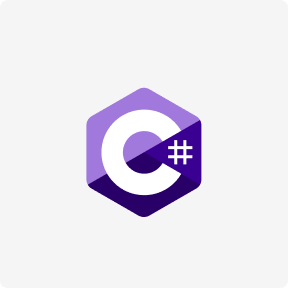Neon’s pg_embedding was also recently released with support for HNSW. While pgvector is a wonderful extension (and is offered as part of Timescale Vector), it is just one piece of the puzzle in providing a production-grade experience for AI application developers on PostgreSQL. After speaking with numerous developers at nimble startups and established industry giants, we saw the need to enhance pgvector to cater to the performance and operational needs of developers building AI applications. MongoDB is 130 times slower than Postgres because the only join tactic available is to iterate over employees, for each one performing a lookup in the department table. In contrast, Postgres can use this tactic (called iterative substitution) as well as merge join and hash join, and the Postgres query optimizer will pick the expected best strategy.

It makes queries execute faster as it’s in a serialization format that effectively archives JSON-like documents. By storing data in fields such as nested subdocuments and arrays, related information in JSON documents can be stored together for quick query access through the MongoDB query language. MongoDB’s document model allows a user to naturally map to objects within application code, making it easier for full-stack developers to learn and use. Documents provide you with the ability to depict hierarchical relationships to store arrays and other more sophisticated structures easily.
Avoiding message losses, duplication and lost / multiple processing in Kafka
PostgreSQL, while not as fast as MongoDB in terms of its raw insertion speed, excels in terms of ACID compliance. Transactions are processed safely and reliably, allowing an entire transaction to fail instead of executing a write that partially succeeded. MongoDB can also accommodate use cases that require the fast execution of queries and can handle a large amount of data. You can also implement list partitioning where the table is partitioned according to the key values specified.
It is a source-available cross-platform document-oriented database program that uses JSON (JavaScript Object Notation)-like documents and optional schemas to store your data. PostgreSQL, on the other hand, is a free, open-source RDBMS (Relational Database Management System) that was developed at the University of California, Berkley. Both these technologies are leveraged by organizations of all scales, both big & small, and depending on the situation, one can dominate over the other. The serialization format stores documents and skips keys that are not required in the query, making it faster. That is why Integrate.io offers a data integration solution that lets you transform and manage your data in both MongoDB and Postgres.
MongoDB commands developers should be aware of in 2022
PostgreSQL outperforms MongoDB while bigger fluctuations are presented as the sample grows. The set of queries Q7 and Q8 is not performed for all the values of vessels and timestamps. We excluded the sample 1000 because the response time was significant high.

In terms of overall performance, it would rank 3rd in our benchmark behind Timescale Vector without PQ enabled and pgvector HNSW. These results are all the more impressive considering the index size reduction that enabling PQ yields, as discussed below. Note that if you’re willing to lower accuracy to less than 99%, say ~95%, you can get much faster query throughput. For example, at 96% accuracy, Timescale Vector’s DiskANN-inspired index can process 425 queries per second, and pgvector HNSW can process 376 queries per second. For instance, pgvector just released support for HNSW (a graph-based index type for vector data).
MongoDB: The Scalable Document Database That Has Become a Data Platform
When it comes to choosing a database management system, there are many options available in the market, but two of the most popular ones are MongoDB and PostgreSQL. Then, we run the two queries over both data sets and compare execution times. MongoDB can be a good choice if you want your database to be highly scalable and have a high computation & processing power. It can also be used if users lack programming skills as it is very easy to learn and does not follow the traditional SQL syntax.
- PostgreSQL uses the relational database model that depends on storing data within tables and utilizing the structured query language (SQL) for database access.
- In case of write requests the queries are forwarder only to the primary node.
- MongoDB is a non-relational database, while PostgreSQL is a relational database.
- As an example the size of the index on attribute “ship_id” in MongoDB is about 6 GB while in PostgreSQL the size is 3,1 GB.
While we’ve discussed the features of both MongoDB and PostgreSQL that make them a hit with the developers, they do have their fair share of weaknesses as well. MongoDB Atlas performs the same way across the three biggest cloud providers, making migration between multiple clouds easier. While PostgreSQL uses the GROUP_BY function to process and run aggregate queries MongoDB typically uses aggregation pipelines to process its queries. Data migration may also generate overhead; however, this is standard irrespective of the database you have implemented in your system.
Comparison of MongoDB vs. PostgreSQL
These tools provide a graphical environment for database administration, query execution, and performance tuning, catering to both novice and experienced users. MySQL’s familiar SQL language, widely adopted across the industry, ensures ease of use and compatibility with existing skills and knowledge. While MongoDB does not support FOREIGN KEY constraints, PostgreSQL does. A foreign key can be one column or a group of columns that you can use to create a link in data from multiple tables at the same time. MongoDB aggregation pipelines are made up of multiple stages to transform data. Postgres uses GROUP_BY to run queries while MongoDB uses the aggregation pipeline.

These sets allow you to record and replay processes on an as-required basis. MongoDB uses synchronous replication, which involves multiple repositories or systems that update at the same time. MongoDB is a document database and uses BSON for processing its data whereas PostgreSQL is a relational database that uses traditional SQL for its processing. Our practice-proven process has helped over 300 businesses, including Samsung, Airbus, Nec, Disney, and top startups, build great online products since 2016. Early-stage startups who worked with us have raised over $140M in funding.
Enter Timescale Vector: PostgreSQL++ for AI Applications
MongoDB and PostgreSQL are different types of databases that have distinct data models. Benchmarking databases that follow different approaches (relational vs document) is harder still. Despite the different data models that MongoDB and PostgreSQL expose, many organizations face the challenge of picking either technology. The difference in results in the transactions benchmark were particularly stark.

On the other hand, MongoDB has eventually become extensible allowing users to create their functions and use them within the framework. It’s equivalent to user-defined functions (UDF) which allow users of relational databases (like PostgreSQL) to extend SQL statements. The real question isn’t MongoDB vs PostgreSQL, but rather the best document database vs the best relational database. A Shared Cluster consists of shards which in turn contain a subset of the sharded data. Every machine contains only a portion of the shared data and each machine replicated to secondary nodes for data redundancy and for fault tolerance.
PostgreSQL vs. MongoDB Performance
PostgreSQL offers tons of authentication methods including a pluggable authentication module (PAM) and lightweight directory access protocol (LDAP), which reduce the attack surface of the servers. It also ensures server-level protection through host-based authentication postgresql vs mongodb performance and certificate authentication. It can be difficult to adjust the structure of the database once it’s loaded. It needs several teams in development, ops, and the database administrator to coordinate the changes made in the structure carefully.